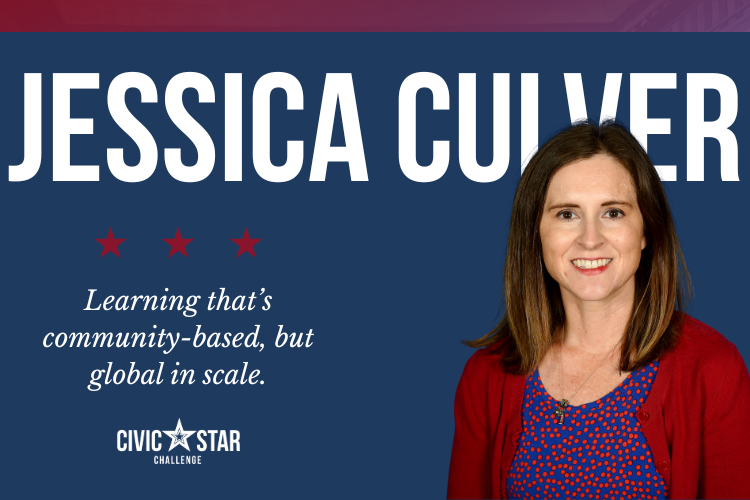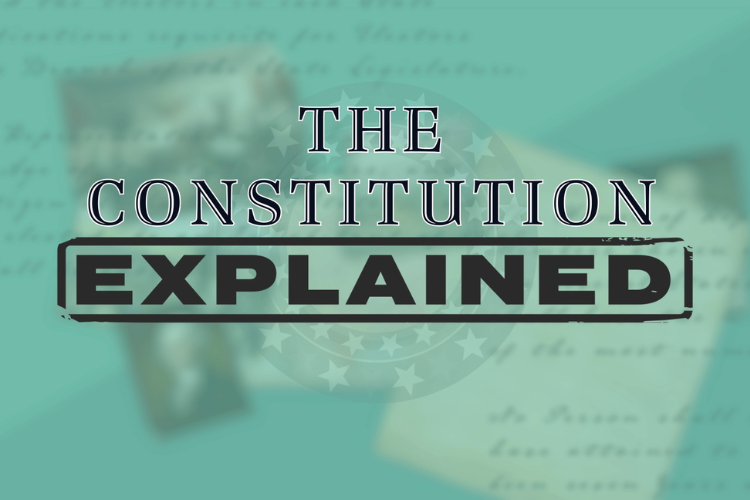You’re a social studies teacher, and it’s time to teach due process. Unless you’ve been living in a cave or severely limiting your media diet (which is hardly an unreasonable habit), then alarm bells may be starting to go off in your head. Don’t worry! We’ve got you covered.
As always, the first thing you want to do is consult your state standards. Let’s use an example.
To pick a state, I decided to throw a dart at the map on my office wall. Unfortunately, it’s a world map from 1986, and I’m bad at darts, so it landed on Czechoslovakia. Let’s go with California, since that also starts with a C. Sorry, Colorado. You, too, Connecticut.

Exhibit A. Evidence of Emma’s super below-average dart-throwing abilities, which has been leveraged in defense of my husband’s new rule that “Emma is not allowed to throw darts in the house”. I checked, and the rule does not apply to the kids or the dog, so I’m filing an appeal on strict scrutiny grounds.
Here’s what Standard 8.2.6 for Grade Eight United States History and Geography: Growth and Conflict in the History-Social Science Content Standards for California Public Schools says: Students analyze the political principles underlying the U.S. Constitution and compare the enumerated and implied powers of the federal government.
- Enumerate the powers of government set forth in the Constitution and the fundamental liberties ensured by the Bill of Rights
Here’s what Standard 12.5.1 for Grade Twelve Principles of American Democracy and Economics says: Students summarize landmark U.S. Supreme Court interpretations of the Constitution and its amendments.
- Understand the changing interpretations of the Bill of Rights over time, including interpretations of the basic freedoms (religion, speech, press, petition, and assembly) articulated in the First Amendment and the due process and equal-protection-of-the-law clauses of the Fourteenth Amendment
We’ve got the standards! We’re making progress. Now, it’s time to craft the perfect lesson plan.
But first, remember when I said that you’re allowed to turn off “Breaking News” notifications on your devices? I meant it, but I can’t help but share with you these wild “due process-related” headlines:
- Man claiming to be a U.S. citizen held for deportation (Ng Fung Ho v. White)
- President signs order forcing all people from a certain country to report to detention camps (Korematsu v. United States)
- Florida man denied counsel in misdemeanor case; sentenced to 5 years state prison (Gideon v. Wainwright)
You’re probably on to me. You know these are historical headlines, not current ones. Here’s the thing: you and I both know the overwhelming majority of our students couldn’t tell us if these things happened yesterday or over 100 years ago, as is the case with the first bullet point. That presents an opportunity to “Use historical examples instead of current ones.”
Based on the direction I’m taking here, this presents an opportunity to “Use primary sources, secondary readings, and/or digital media as ‘grounding texts.’” Here are some I recommend, although please don’t think you need to use all of them!
Primary Sources
- The Fifth and Fourteenth Amendments of the Constitution; Article 1. Section 9 of the Constitution
- Supreme Court decisions in Ng Fung Ho v. White, Korematsu v. United States, and Gideon v. Wainwright
Secondary Sources
- Student readings from iCivics
- Korematsu v. United States Landmark Library mini-lesson
- Accused? Know Your Rights lesson plan
- Expanding Protections lesson plan
Educational Media
- iCivics Constitution EXPLAINED Videos
As students learn about and evaluate historical examples, it’s only natural that they make comparisons to the present day and current events. That’s perfectly fine, and brings us to another piece of We Can Teach Hard Things guidance: Build compare and contrast skills by asking students to distinguish current events as typical or not typical.
How is what they’re seeing today similar to or different from the way things have unfolded historically? That said, be sure to help students identify unfair or false comparisons. A controversy today may evolve very differently from the way it would have appeared to evolve in the past, but are we truly comparing two identical episodes? What makes them similar? In what ways are they different?
Also, be cautious of complex Supreme Court decisions that involve multiple holdings or holdings that may have been reversed or weakened by subsequent decisions.
And lastly, if a student raises their hand and says something to the effect of, “Aren’t we deporting people now without hearings or trials?” or “I heard the government is putting everyone who looks Hispanic in detention camps. Is that true?” I encourage you to refer back to the guidance we provided in our previous blog post on teaching about the separation of powers. The great part about that guidance is that it’s content agnostic! No matter what the student’s question is, assuming it’s not grossly inappropriate, it is always appropriate to acknowledge and address it at a later time.
Admin Tip: Take a look at your state standards related to due process. This will give you confidence in your ability to field any inquiries or challenges from off-campus stakeholders. As always, tell your social studies teachers you are there to support them!



